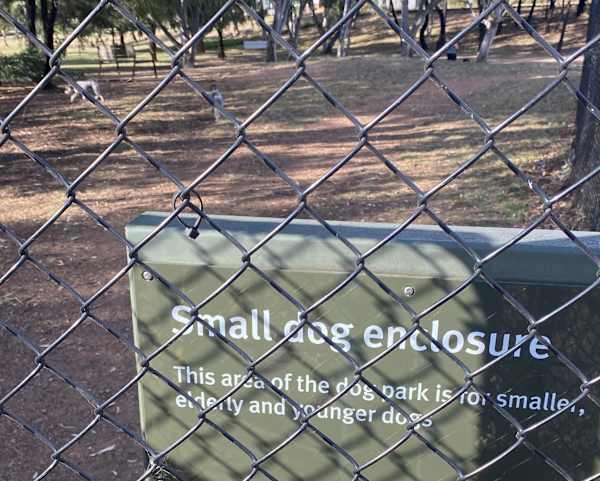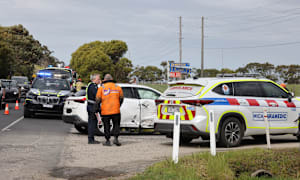THE Phillip Island Bass Coast Dog Owners Association, established in 2020 to provide a voice for dog owners, has expressed its concern that the shire council has missed the boat for ‘New and Upgraded Dog Parks’ funding.
As part of its ‘Open Space for Everyone Strategy 2021’ the Victorian Government committed $13.4 million to build and upgrade dog parks across the state.
In stage one, a select group of local councils was funded ($7.685 million) to deliver six new dog parks and 13 dog park upgrades, mostly in suburban areas.

Round 2 of the same program, offering $5 million, was seen as a chance for regional councils to cash in, with funding of between $100,000 (unencumbered) and $300,000 (co-contribution of $200,000) available.
But former secretary of the dog owners’ group, Anne Grose has raised her concerns that the Bass Coast Shire may not even have made an application for funding.
“I wrote to the council, and they responded saying they didn’t believe the ‘Carnival’ site (Hilton Chadwick Reserve) met the criteria for funding. I’ve written again to ask if they’ve applied for any of the five funding rounds since COVID and so far, received no reply.
“I’ve had it verbally confirmed that the shire didn’t apply for funding because they hadn’t finished the dog park strategy, but I’ve had a reply from DEECA saying that a dog park strategy was not a prerequisite.”
In response to a question from the Sentinel-Times today, the shire has confirmed it did not make an application for funding.
“Council did not apply for a grant under this stream as no appropriate locations have been found. However, identifying these areas is a priority as part of the Domestic Animal Management Plan implementation,” said a spokesperson for the shire.
Cheryl Owens, President of the Phillip Island Bass Coast Dog Owners Association said this week that it would be “incredibly disappointing” if the shire hadn’t made application for funding.
“We’re concerned to retain and improve the dog parks we have now but there’s no doubt that better facilities are needed right across the shire, especially in new developments.”
Had the shire applied for and received a $300,000 grant, and matched it with $200,000 of its own money, a project in the order of $500,000 would have been possible.
Here are the types of projects that would have been eligible:
“Funding will primarily be for purpose-built facilities for dogs and their owners to enjoy. This includes new dog parks, or upgrades, replacements, renewals and additions to existing dog off-leash areas. Examples include (but are not limited to): play features, water bowls, fencing of all or part of the off-leash area, delineation of different areas for active and quiet dogs, replacement of granitic sand areas, refurbishment of existing fencing, signage supporting responsible pet ownership, vegetation buffers, shelter, bins, agility equipment, paths, shade, rocks and other nature-play elements.
“A component of funding may also be used for supporting infrastructure that benefits dog owners and other park users. Examples include: paths to improve connectivity, lighting to facilitate greater use, all abilities access, tree planting and landscaping for cooling and greening of the open space. Any supporting infrastructure must be located within the existing open space or within 200 metres of the primary dog off-leash area.”
“These are exactly the sorts of things we have been asking for, and frankly, the sorts of things needed in an area of strong dog ownership like Bass Coast,” said Ms Owens.
The South Gippsland Shire Council has also been asked to respond to the question about whether they made application for funding in Round 2 which closed in October last year. Successful projects were to have been announced at the end of January, however, you won’t find Bass Coast on the list.
It has been suggested that the cash-strapped Bass Coast Shire Council may not have applied for a grant because they didn’t have the funds to match a significant allocation.










